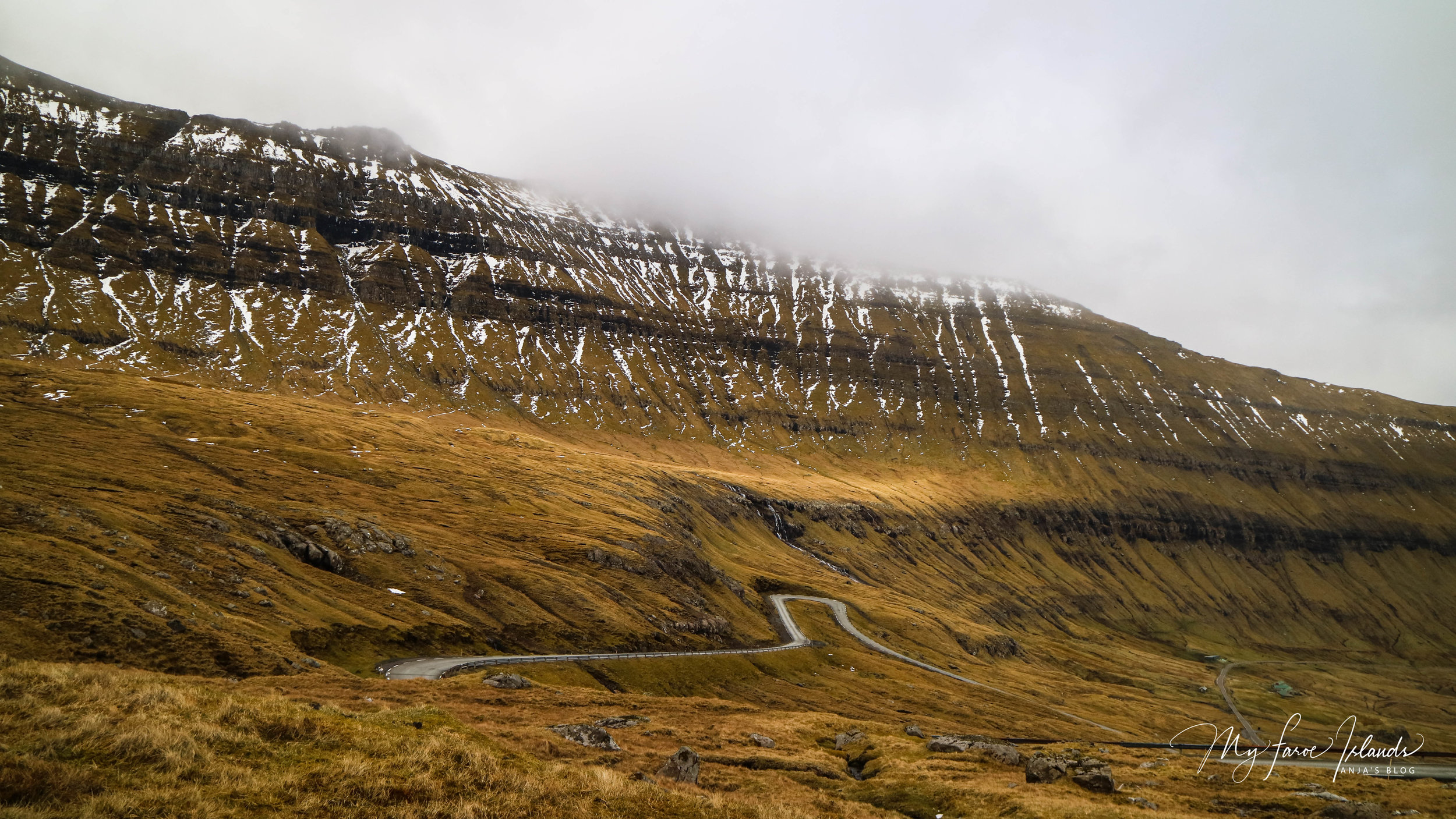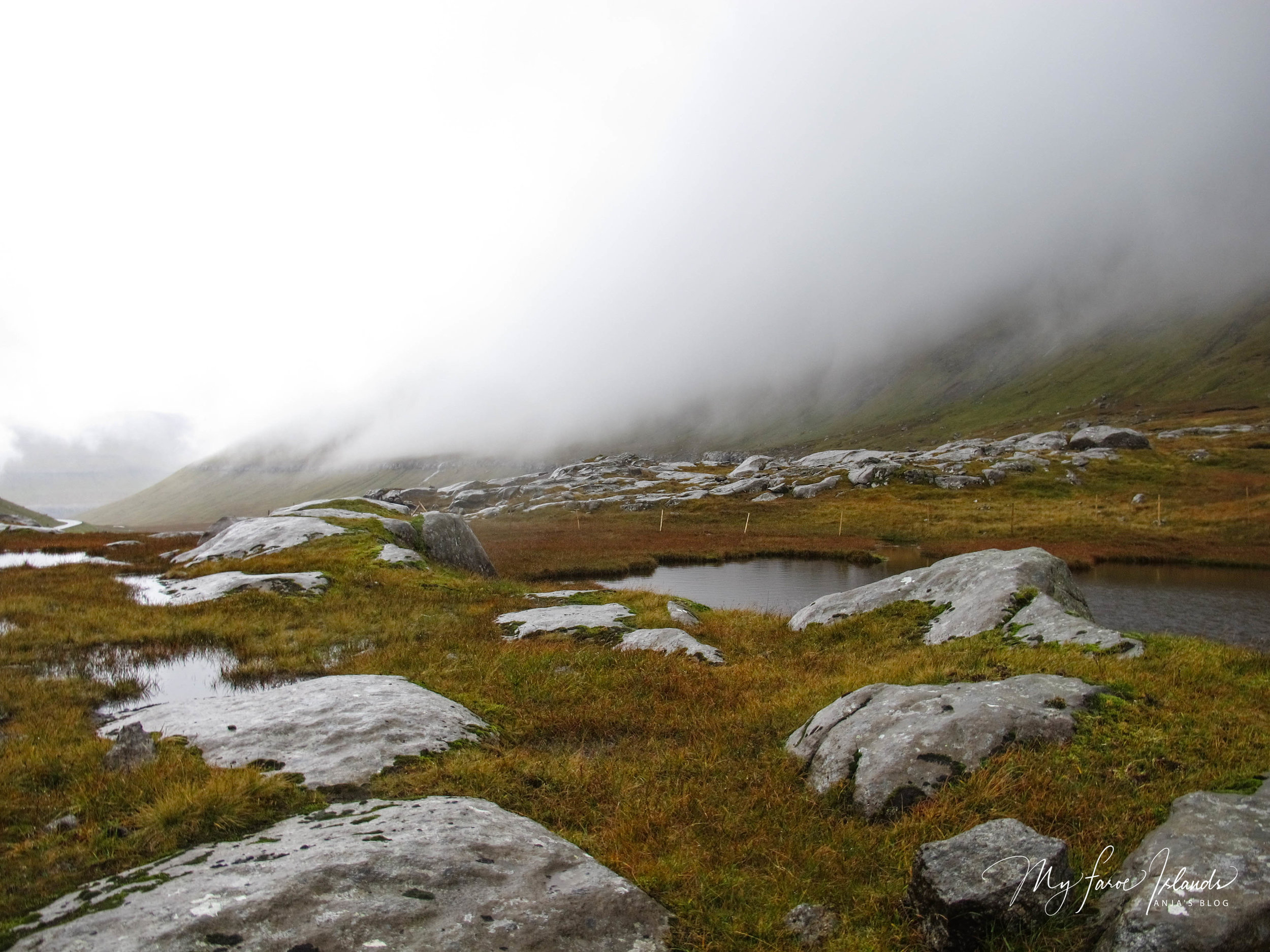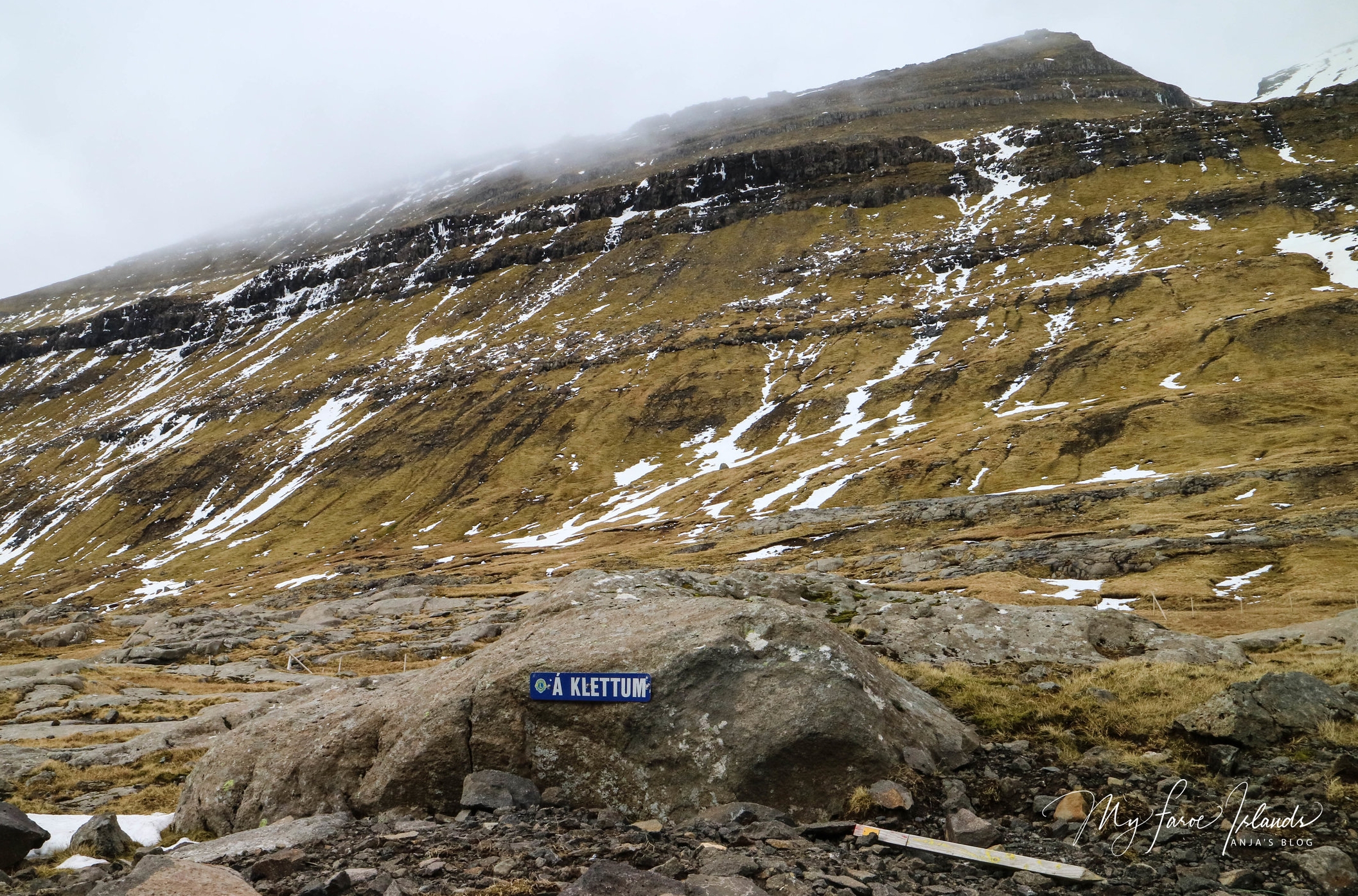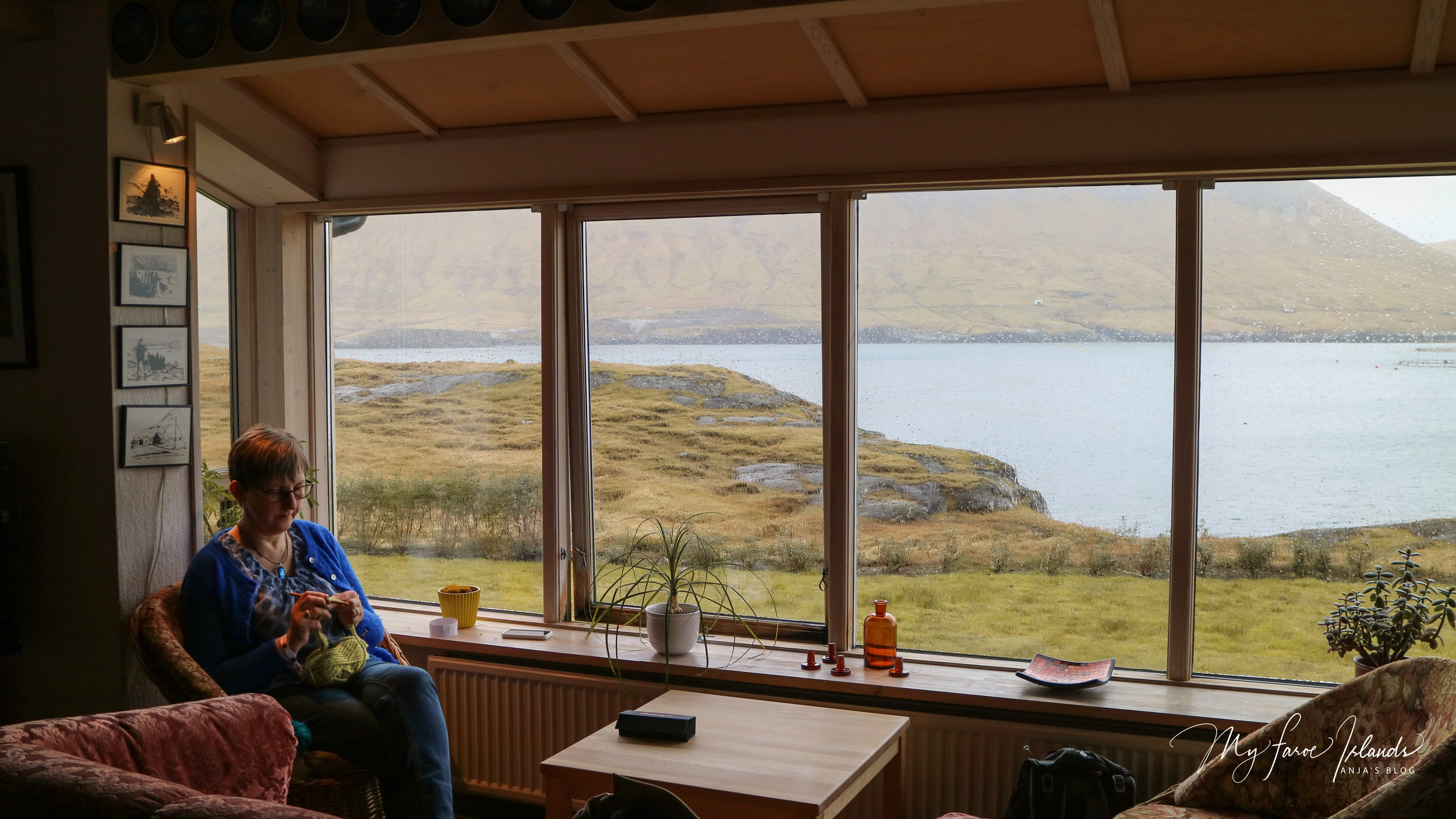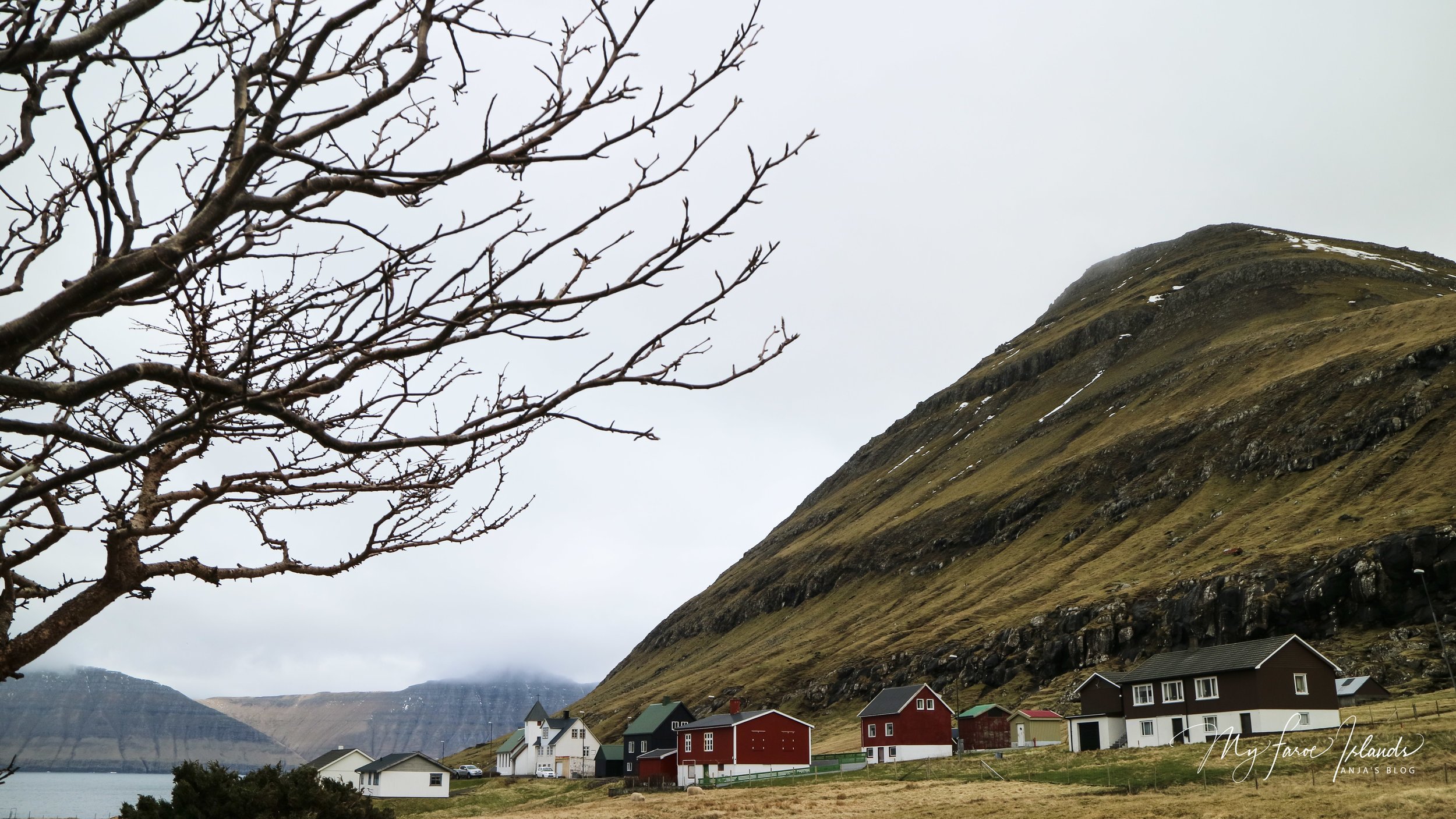Tiny, curvy, narrow, ring, fjord, single-lane, asphalt, bumpy, gravel, coastal, steep hill. Without question. The Faroe Islands are packed with fabulous roads. Oyndarfjarðarvegur, the long and winding mountain road that leads to the villages Oyndarfjørður and Hellur, is one of my all-time favorites.
The road is the reward: Constructed in 1968. Breathtaking scenery. Driver’s delight. But wait a sec. That sign over there. Á Klettum. What’s that about? Lost? As always: ask the locals. Jorun Eið Johannesen is one of the 13 residents of Hellurnar, and she knows all the details, Faroese language finesse included. Basics: A “Klettur“ is a large rock, a piece of rock or a boulder. In this particular case, the sign has been put up to spotlight a formation of large flat rocks.
Now let’s shift attention to language issues, and why – in this context – geography matters. Approaching Á Klettum. How to tell a friend? „People in Hellur say “frammi á Klettum”, Jorun explains. „When you go fram/frameftir you always go into the fjord/away from the mouth of the fjord. The opposite word is út/úteftir, towards the mouth of the fjord.“
Far too complicated, regarding your ambitions? Just tell your friends that you have been cruising along route 643, and that you passed some amazing flat rocks in doing so. Oyndarfjarðarvegur & Á Klettum: „A beautiful landscape“, Jorun agrees. „All year long.“ Seasonal side note: „Heavy snowfall is quite a common sight up there in the wintertime. But the people at Landsverk do everything to keep the road open to traffic.“
Post scriptum: Landsverk i.a. builds, maintains and administers the transport network in the Faroe Islands. Post scriptum traffic quiz: How many authorized road users do you actually spot in the picture below?
